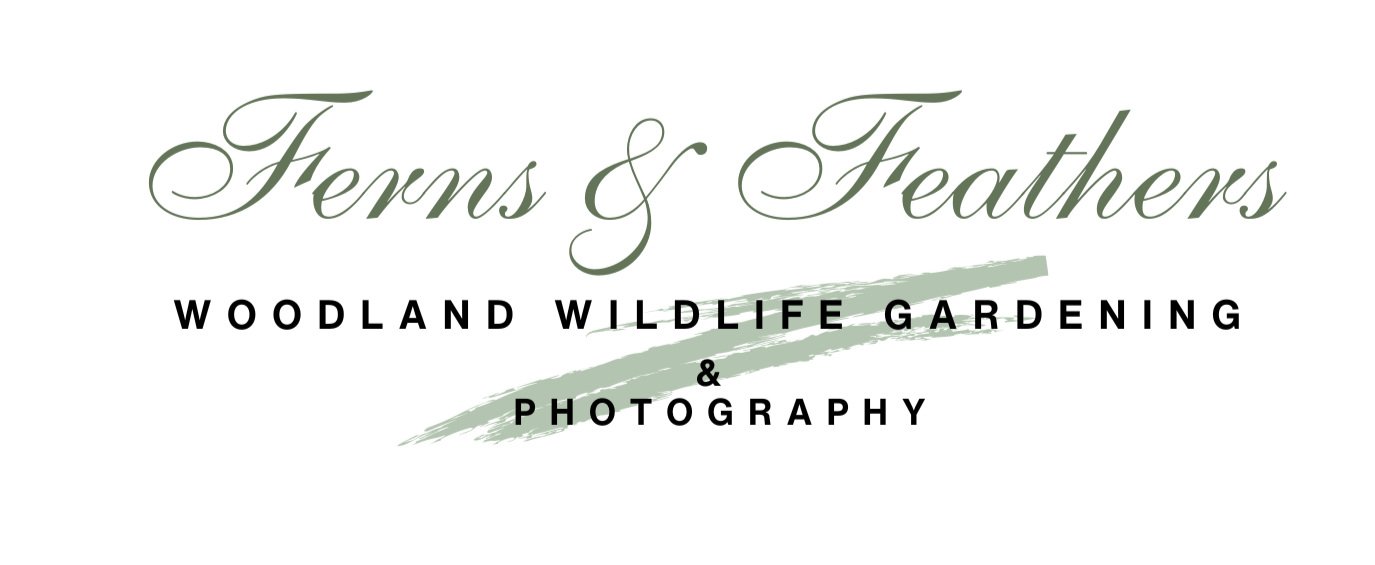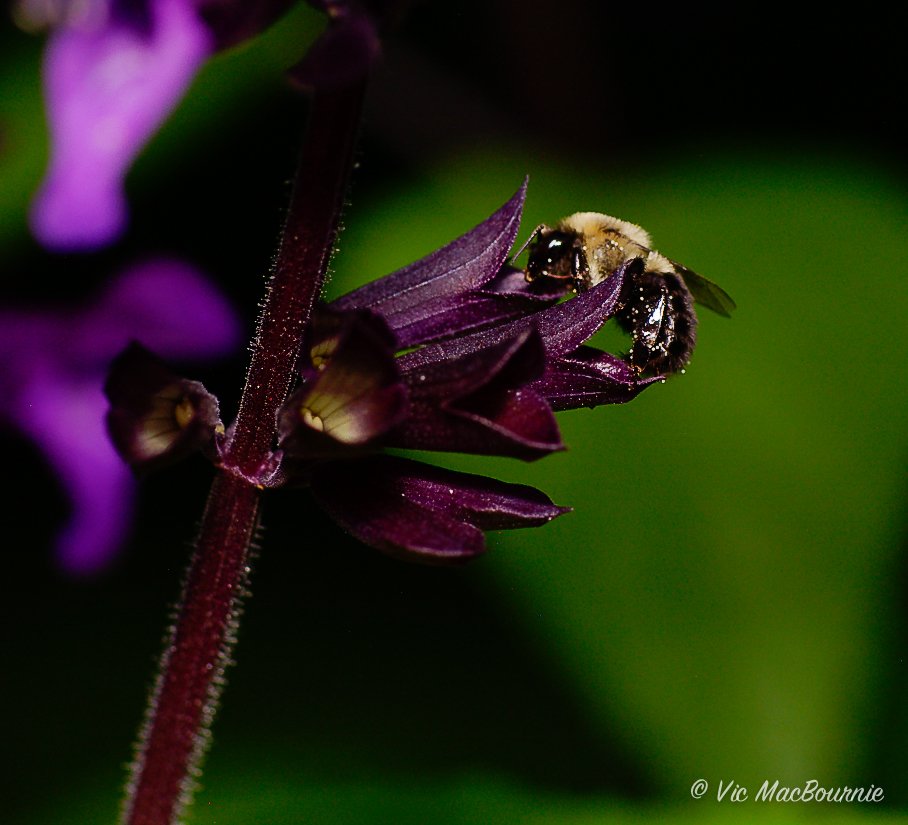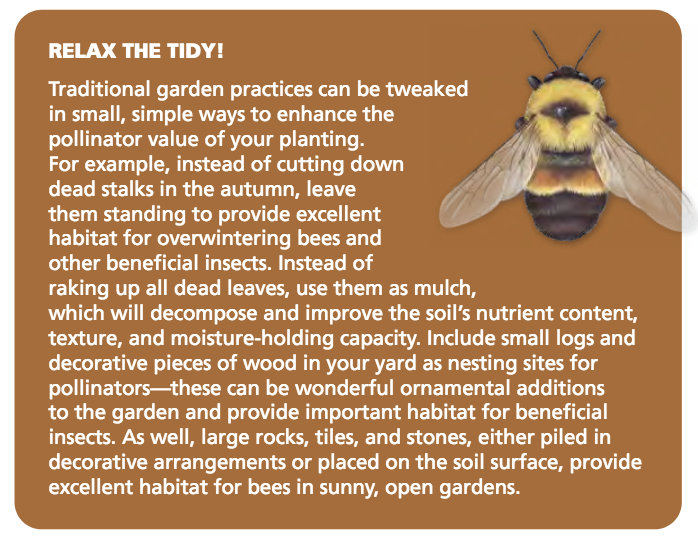Why worry about native bees?
Because too many of us are worried about the wrong ones
Author Paige Embry explores the importance of Our Native Bees in her informative book. top left, a “bee home” created by a local craftsman who takes great care to create houses that can be used year after year. Links to both the Bee houses and the book in the text below.
When it comes to bees most of us are worried about the wrong ones.
Honey bees are not native, they aren’t very effective pollinators and they may very well be killing our lovely little native bees.
If that’s not reason enough to be concerned, what makes it even worse is that Big Ag is generally more worried about honey bees. Afterall, Big Agriculture has become dependent on honey bees to pollinate their acres and acres of monoculture farms and orchards and they’re not going to let a couple of native bees get in their way of making money.
That’s where we gardeners can make a difference. By growing native plants, leaving our gardens a little messy, refraining from all pesticides and leaving our leaves on the ground rather than cleaning them up in fall or early spring, we can provide these lovely little work horses with everything they need to prosper in our yards.
They don’t ask for much.
Our native bees are mostly solitary. They don’t need a lavish wooden hive. A simple hole in the ground that they excavate all on their own or use an existing one left behind by another garden inhabitant, is usually all it takes. Oh, and did I mention that native bees are very docile, rarely sting (in fact most don’t even have stingers) and are completely non-aggressive.
High quality bee homes like the ones above from Best Nest (click on picture to purchase) include interchangeable bee cavities that can be removed and cleaned after use.
In their book A Garden For The Rusty-Patched Bumblebee, Creating Habitat for Native Pollinators, authors Lorraine Johnson and Sheila Colla lay out their thoughtful approach to protecting our native bees.
But first, they focus on where we should be placing our angst and it’s not really with the decline of honey bee hives.
“There’s lots in the news about the loss of honeybees, Colony Collapse Disorder, Varroa mites and their dire consequences for the food we eat. Industrial agriculture – the system of large, mechanized monoculture farms – depends on the pollination services of non-native and managed honeybees, trucked long distances across the continent to pollinate crops…
“We need to find out why honeybees are dying … but it’s important to note that honeybees are not an endangered species at risk of extinction. They are among the most common species in the world introduced to many countries outside of their natural ranges.”
In fact, when a colony dies, a new one can be started simply by purchasing a readily available new queen.
The authors go on to say that this does not diminish the “seriousness of the honeybee deaths”, but point out that the “focus on managed honeybee hive losses has eclipsed the fact that many native bees, such as the rusty-patched bumblebee, the American bumblebee and others, are in serious trouble. And when native bees disappear, they disappear forever.”
For more information on helping our native bees, take a moment to check out my other posts listed below:
• Our Native Bees – Creating a lawn for native bees
A native Bumblebee works a salvia in our garden. Honey bees are extremely rare in our yard. Probably 90-90 per cent of the bees in our yard are native. A positive sign and proof that the steps we are taking to provide habitat is helping our native bees.
5 take aways about Native Bees
1) There are at least 4,000 species of native bees in North America in every shape, size and colour you can imagine.
2) Sweat bees – beautiful green iridescent native bees – get their name because some like to lick up sweat
3) Most native bees are small, live alone and do not sting either because they have no stingers or are so docile that it would take a life and death situation to get them to sting.
4) Native bees vary in size from the mighty carpenter bee (about an inch in length) to the tiny Holeopasites calliopsidis that isn’t much bigger than Roosevelt’s nose on a dime. And it’s not even the smallest native bee in the United States. That honour goes to Perdita Minima.
5) There are 20,000 species of bees worldwide that are responsible for the seeds of rebirth of three-quarters of the flowering plants in the world.
A Garden For The Rusty-Patched Bumblebee, Creating Habitat for Native Pollinators is an excellent addition to any gardener’s library.
Paige Embry, author of the Our Native Bees book is a true solitary bee aficionado. “It annoys her — rightly — that most people know next to nothing about the 4,000 species of native bees nesting in the ground, in trees and in the sides of our houses,” points out the New York Times, in a review of her book.
Embry points out that in 2015 the U.S. federal government “issued a plan to restore 7 million acres of land for pollinators and more than double the research budget for them.”
Big problem, however. In doing so they forgot about one important ingredient.
That forgotten ingredient was evident in the name of the new program: the “National Strategy to Promote the Health of Honey Bees and Other Pollinators.”
As Embry aptly points out: “Four thousand species of native bees, not to mention certain birds, bats, flies, wasps, beetles, moths, and butterflies, reduced to ‘other pollinators.’ ”
It’s the sad tale of our native bees. But with the efforts of Embry, bee researchers and entrepreneurial dreamers who are working hard to help native bees get the respect and recognition they deserve, there is certainly some reason to be optimistic for the 4,000 species of native bee that call North America home.
This graphic from Embry’s book Our Native Bees shows the attention to detail and helpful advice that the book offers. Another must for the native-bee-loving gardener.
Embry’s 195-page gem of a book is actually written in two halves: The first half focuses on the commercial importance of native bees in the agricultural world and tells the story behind California’s massive almond industry among others; the second half explores the importance of the native bees in nature and efforts made to save them including an unlikely pairing between the future of native bees and intensive work being done at a U.S. golf course to create ideal habitat for them and other pollinators.
Time to rethink lawns
Embry wastes little time advocating for a change in the way homeowners see their carpets of monoculture they call grass. She uses an example that is both shocking and encouraging.
She turns her focus to golf courses and goes into great detail about two programs at American golf courses that encourage setting aside natural areas on the golf course for native pollinators.
The first program stems from a 2002 report from the Xerces Society for Invertebrate Conservation who teamed up with the U.S. Golf Association to write a report called “Making room for Native Pollinators: How to create Habitat for Pollinator Insects on Golf Courses.”
The second program, and one she turns her attention to, is a program out of Europe, Operation Pollinator, started by Syngenta, one of the world’s largest agrochemical comanies (another name for a pesticide company).
The program started in the United Kingdom in the early 2000s after a survey of golfers revealed that what they liked most about going out for a round of golf was the nature they sometimes stumbled across in the more natural areas of the course. That, together with the desire to reduce the costs of operating a course, lead to the unexpected marriage between nature and a massive pesticide company.
By creating a natural area for pollinators, the pesticide company was able to use their expert biologists to turn perfect turf into pollinator-friendly areas. The plan cut down on the cost of pesticide while at the same time providing more nature for the golfers.
From the simple addition of clover into the lawn Embry moves on to the “making of a bee lawn.”
The transformation from golf-course turf to the perfect bee lawn has been the focus of many studies and creations that has met with varied success over the years.
As one researcher at the University of Minnesota explains: “the hardest part of getting a bee lawn into use isn’t developing the seed mix; it’s dealing with people’s vision of what a lawn should be…"
“If we didn’t have to worry about our neighbours, I think there would be a much more diverse look.”
Embry goes on to explain as a possible solution: “If the idea of flowers growing in the grassy lawn just isn’t quite achievable yet, there’s always the golf course route. Take out some of that lawn and convert it into a home and dining hall for bees. It’s all a matter of rethinking normal.”
A time for action
Now is the perfect time to remove more grass and add native plants to your garden. For a complete list of native plants (to Ontario and parts of North eastern United States) check out A Garden for the Rusty-Patched Bumblebee. In it, the authors provide more than 170 pages of information on what and how native bees and other pollinators benefit from and help specific native plants.
Amazon link for A Garden for the Rusty-Patched Bumblebee
Amazon Link for Our Native Bees






